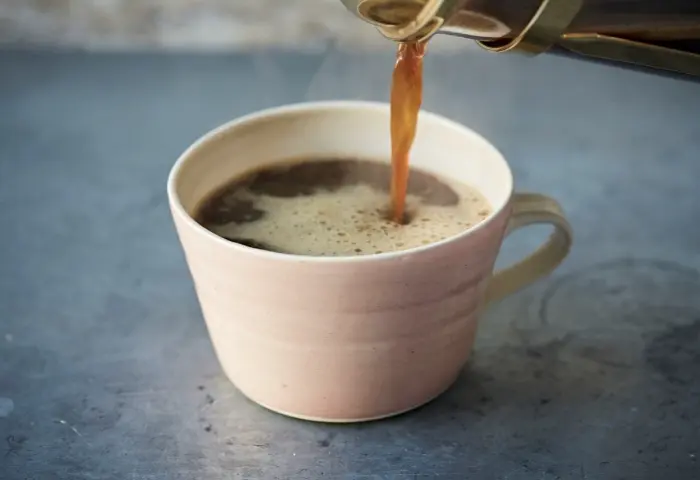Espresso is the foundation of many beloved coffee drinks, from cappuccinos to lattes. Brewing the perfect shot requires precision, quality ingredients, and the right technique. Whether you’re a beginner or a seasoned barista, mastering espresso takes practice. This guide covers everything you need to know—from selecting beans to pulling the ideal shot.
Understanding Espresso
Espresso is a concentrated coffee beverage brewed by forcing hot water through finely-ground coffee under high pressure. Unlike drip coffee, espresso has a thicker consistency, a rich crema (the golden layer on top), and a bold, complex flavor. The process extracts oils, sugars, and aromas quickly, resulting in a small but potent drink.
The Importance of Fresh Coffee Beans
The foundation of great espresso is fresh, high-quality coffee beans. Stale beans lose their oils and aromas, leading to a flat-tasting shot. Look for beans roasted within the past two to four weeks and stored in an airtight container away from light and heat.
Choosing the Right Roast
Espresso blends are often medium to dark roasts, which provide a balanced sweetness, acidity, and bitterness. However, lighter roasts can also work if they’re ground and extracted properly. Experiment with different origins and blends to find your preferred flavor profile.
Grinding for Espresso
The grind size is critical for proper extraction. Espresso requires a fine, consistent grind—similar to table salt. If the grind is too coarse, water will pass through too quickly, producing a weak, sour shot. If it’s too fine, the water will struggle to flow, resulting in a bitter, over-extracted espresso.
Investing in a Good Grinder
A burr grinder is essential for achieving uniform particle size. Blade grinders create uneven grounds, leading to inconsistent extraction. Adjustable burr grinders allow you to fine-tune the grind for optimal results.
Dialing in the Grind
Even with the right equipment, you’ll need to adjust the grind based on humidity, bean age, and machine performance. Start with a medium-fine setting and tweak it until you achieve a shot that extracts in 25-30 seconds.
The Espresso Machine
While professional machines can cost thousands, home espresso makers can still produce excellent results. Look for a machine with a stable temperature (195–205°F), sufficient pressure (9 bars), and a quality portafilter.
Preheating Your Equipment
Before brewing, warm up your machine and portafilter by running hot water through them. A cold portafilter can cause heat loss, leading to under-extraction. Preheat your cup as well to maintain the espresso’s temperature.
Dosing and Tamping
The standard dose for a single shot is 7-9 grams of coffee, while a double shot uses 14-18 grams. Consistency is key—use a scale to measure your dose accurately.
Proper Tamping Technique
After dosing, distribute the grounds evenly in the portafilter. Tamp with firm, even pressure (about 30 pounds) to create a level surface. An uneven tamp can cause channeling, where water bypasses parts of the coffee, leading to uneven extraction.
Pulling the Shot
Lock the portafilter into the machine and start the extraction immediately. A perfect shot should take 25-30 seconds, yielding 1 ounce for a single shot or 2 ounces for a double.
Monitoring Extraction
Watch the flow—it should start as a slow, dark stream, then transition to a honey-like consistency with a rich crema. If it’s too fast, adjust the grind finer; if too slow, go coarser.
Troubleshooting Common Issues
Sour Espresso: Under-extracted—try a finer grind or longer extraction.
Bitter Espresso: Over-extracted—use a coarser grind or shorter brew time.
Weak Crema: Stale beans or incorrect grind size may be the issue.
Milk Steaming (For Milk-Based Drinks)
If making a cappuccino or latte, steam milk to a velvety microfoam. Use cold milk and submerge the steam wand just below the surface, creating a slight whirlpool. Aim for 150°F—any hotter, and the milk may scorch.
Pouring Latte Art
Once your espresso and milk are ready, pour slowly, controlling the flow to create designs like hearts or rosettas. Practice is essential for mastering latte art.
Maintaining Your Equipment
Regular cleaning prevents old coffee oils from affecting flavor. Backflush your machine with water daily and use a cleaning solution weekly. Descale monthly if you have hard water.
Storing Coffee Properly
Keep beans in an airtight container away from light, heat, and moisture. Avoid freezing or refrigerating, as condensation can degrade quality.
Experimenting and Refining
Even professionals continuously adjust their methods. Try different beans, ratios, and techniques to find what works best for your taste.
Keeping a Brew Journal
Track your variables—dose, grind size, extraction time—and note the results. This helps identify patterns and refine your process.
Conclusion
Making the perfect espresso is both a science and an art. With fresh beans, precise grinding, proper tamping, and careful extraction, you can craft a shot that’s rich, balanced, and full of flavor. Patience and practice are essential—each adjustment brings you closer to espresso mastery. Now, armed with these techniques, it’s time to brew, taste, and enjoy the process. Happy pulling!
Related topics:
How Much Caffeine is in a Shot of Espresso?
What to Add to Espresso Martini?
Why Does My Espresso Taste Sour?


